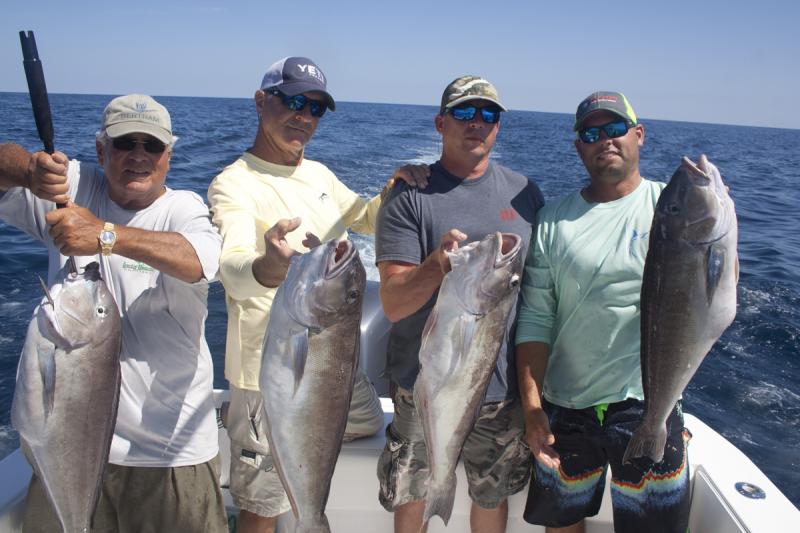A deep drop trip for tilefish
On Aug. 26 at 7 a.m., I boarded Steve Redden’s 31 Contender at the Indian River Marina dry stack area along with Jeff Waxman, Shane Martin and Dr. Pat Petrera. We headed to the Baltimore Canyon to try for tilefish. Two-and-a-half hours later, we were on site and making our first drop in 400 feet.
The ride out was very pleasant, as Steve has three beanbags for his passengers to sit on at the stern. This was my first experience with these seats, and they are very comfortable.
This is a well-practiced crew, and they use electric reels to test a location before going to hand-crank rods and reels with jigs. Our first two stops produced only the smallest rose fish I have ever seen. Third time was the charm, as both electric-reel rods loaded up as soon as the rigs hit bottom.
Since this was my first time deep dropping, I was surprised to learn tilefish colonies are very small but very concentrated. You have to be right on the spot or you’ll catch nothing. We made short drifts with the captain keeping track of our position by using the GPS and sonar.
I moved to the bow with a rod and reel mated to a very heavy Williamson jig. My first drop was instantly inhaled by a tilefish, and as I was cranking it up, my line got tangled with Shane’s. He got his fish to the surface, but before we could get untangled, the line on my reel broke.
I re-rigged and dropped back down, where the jig was received with the same gusto as the first drop. As I was cranking this fish up, I began to feel a little woozy. Then my arms went to Jell-O and my legs gave out. Someone grabbed my rod before it went overboard, and I hit the deck. Fortunately, the beanbags had been moved from the stern to the bow and I fell on one of them.
The next thing I remember is coming to with a cold rag on my face and Dr. Petrera checking my vital signs. It took a while for me to feel better, and standing took even longer. Finally, I moved under the T-Top on another beanbag until I recovered my strength, what little I still had.
While my fishing day was over, the rest of the guys kept cranking away. Jeff hand-cranked a few, but did most of his fishing with his electric reel. I was somewhat surprised that several blueline tiles got off the hook halfway to the boat. They put up a pretty good fight until they are almost to the boat; then they seem to give up and sort of float to the surface.
With a good number of bluelines in the fish box, the crew decided to try some deeper water for golden tiles. As with the bluelines, the first drop was with electric reels in 600 feet of water. One spot looked really good with a sharp drop from 500 feet on down, but failed to produce a single fish.
After coming up empty on the goldens, it was back to the bluelines. The fish were right where we left them and just as eager to take bait or jig. The crews put a few more in the box when Steve hooked up a big fish. This one put up a real tug of war until the line parted. This was the same outfit I had been using when my line broke. By the way, someone during my naptime hooked up with a blueline that still had my jig and the rest of my line attached.
The seas had been all but dead calm all day until we started back. The closer we got to the beach, the rougher it got, until we were taking 5- to 6-footers on our starboard side. Those of us on bean bags in the stern were getting soaked until we finally were able to move under the T-Top. Kind of reminded me of the old days on Paul Coffin’s 22-Mako when the ride home from the canyon was always wet.
Back at the dock we counted out 26 blueline tiles, with the largest 22 pounds, 2 ounces, for the crew at Hook ‘em and Cook ‘em to clean. In spite of the fact that I didn’t catch a single fish, the crew allowed me to take a full share home. I thank them for that.
I have been sniveling and whining about never having been on a deep drop trip. I will no longer be doing that. I don’t know exactly what happened, but I think my old body was trying to tell me something, and I am going to listen.























































